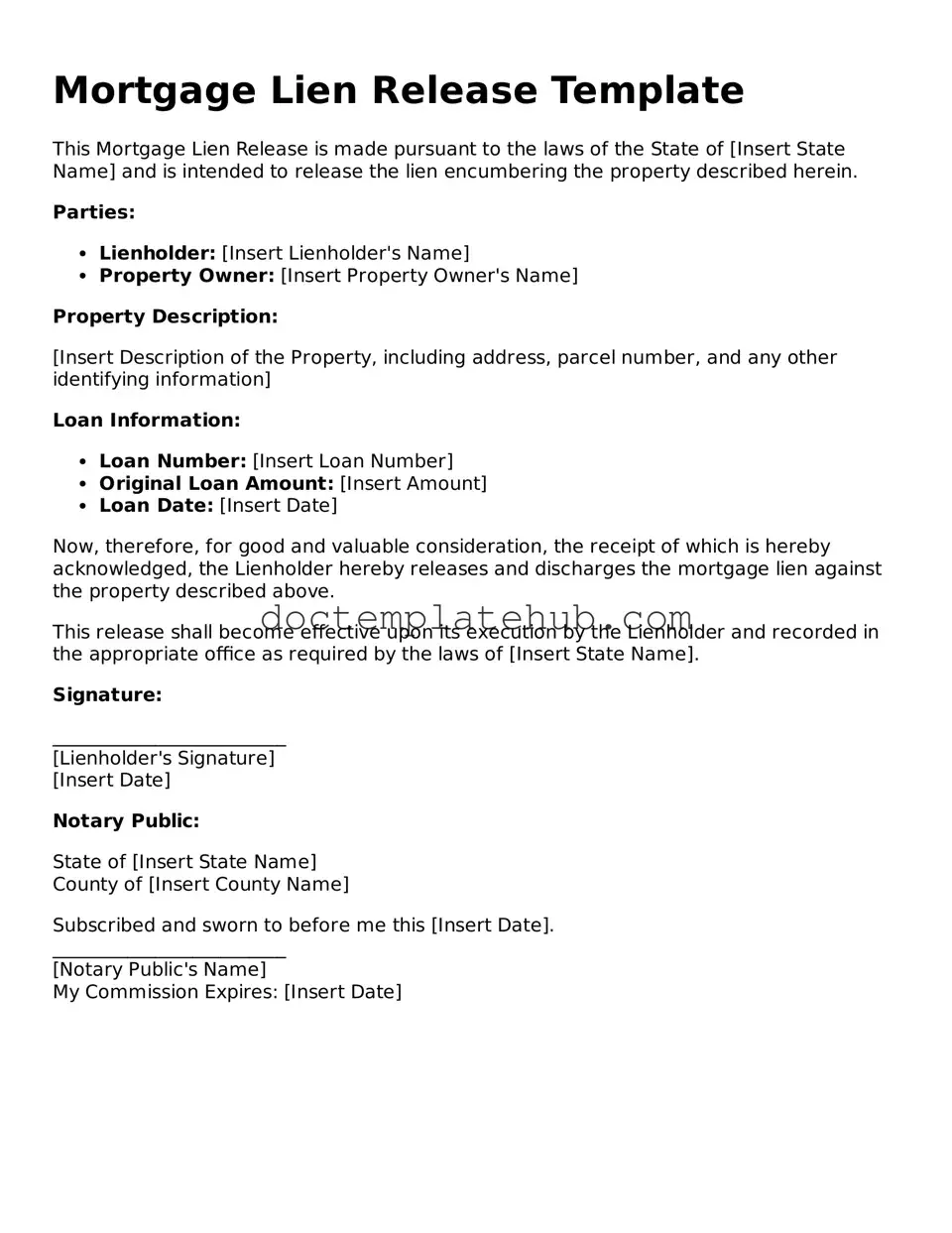The Mortgage Satisfaction form is similar to the Mortgage Lien Release form in that both documents serve to formally acknowledge the completion of a mortgage obligation. When a borrower pays off their mortgage, the lender issues a Mortgage Satisfaction form to confirm that the debt has been satisfied. This document is important for the borrower, as it provides proof that they own their property free and clear of any mortgage claims.
Additionally, understanding the significance of a comprehensive Vehicle Accident Damage Release is essential for parties involved in auto accidents. This form not only formalizes the settlement agreement but also serves to protect both parties by clearly outlining their rights and responsibilities following an incident.
The Deed of Reconveyance is another document that resembles the Mortgage Lien Release. This document is used in states that employ a deed of trust instead of a mortgage. When the borrower pays off the loan, the lender issues the Deed of Reconveyance, which transfers the property title back to the borrower. Like the Mortgage Lien Release, it signifies that the borrower has fulfilled their financial obligation and has full ownership of the property.
The Satisfaction of Judgment form is similar in purpose to the Mortgage Lien Release, as it indicates that a judgment debt has been paid in full. When a debtor satisfies a judgment against them, the creditor must file this document with the court. This ensures that the debtor’s credit report reflects that the judgment is resolved, similar to how a Mortgage Lien Release clears the property title.
The UCC-3 Financing Statement Amendment can also be compared to the Mortgage Lien Release. This document is used to amend or terminate a previously filed UCC-1 Financing Statement, which secures a lender's interest in personal property. When a debt is paid off, the lender files a UCC-3 to release their claim, similar to how a lender releases a mortgage lien once the loan is repaid.
The Quitclaim Deed is another document that shares similarities with the Mortgage Lien Release. While it is primarily used to transfer ownership of property, it can also be used to clear any claims or interests in the property. If a lender holds a lien on a property and releases it, a Quitclaim Deed may be issued to confirm that the lender no longer has any interest in the property, providing clarity to the new owner.
The Certificate of Title is also akin to the Mortgage Lien Release, as it serves as proof of ownership. When a mortgage is paid off, the lender may provide a Certificate of Title to confirm that there are no outstanding claims against the property. This document is essential for the homeowner, as it establishes their clear title to the property, similar to the assurance provided by a Mortgage Lien Release.
Lastly, the Release of Lien form is closely related to the Mortgage Lien Release. This document is used to remove a lien placed on a property for unpaid debts, such as contractor fees or taxes. Once the debt is settled, the lienholder files a Release of Lien, which clears the property title. This is akin to how a Mortgage Lien Release indicates that a mortgage debt has been satisfied, ensuring the homeowner's title is free from claims.
